- A Little History: The First Vacuum Cleaner
- Different Types of Vacuum Cleaners
- Important Features and Purchase Criteria
- Bagged vs Bagless Vacuum Cleaners
- Energy Efficiency Class – The Energy Labels Explained
- Which Floor Nozzle Is Suitable for What Purpose
- House Dust Allergy – This Should Be Taken Into Consideration
- Important Manufacturers
- Smelly Vacuum Cleaner – What Should I Do?
- Stains on the Carpet – How to Remove Stains
- Frequently Asked Questions (FAQ)
The vacuum cleaner is probably one of the most important helpers in the household. Ever since the introduction of energy labels and energy efficiency classes by the EU in September 2014, the vacuum cleaner is once again brought into the spotlight. From that date newly manufactured appliance had to be energy efficient, meaning that a maximum input power of 1600 watts was required. This is reason enough to gather information which vacuum cleaner is best suited to fit your needs.
1. A Little History: The First Vacuum Cleaner
The history of sweeping begins with the development of civilization. When the first nomads settled down in houses, they swept their floors for two reasons: To get rid of the dirt and thus to ensure hygienic conditions, but also to drive out evil spirits and demons. However, not much of this superstition was known in 1876, when the first vacuum cleaner was invented. The vacuum cleaner still became ultimately a mass product, because people gradually realized the connection between dirt and diseases. The beginning of the triumphant advance of the vacuum cleaner was initially held back by the sheer size of the first devices. After all a horse carriage was required, so one of these devices could be transported at all. In addition, not even the operation was simple, because the pumping was done manually.
1.1 The First Application for a Patent
1906 James Murray Spangler created an electric vacuum cleaner, which simply consisted of frames, pillows and a fan. He eventually filed a patent for his device, which he then sold to the company of his cousin, Hoover Harness and Leather Goods Factory. Today, Hoover is still the leading manufacturer of such appliances.
The vacuum cleaner was introduced for the first time in Germany by Axel Wenner-Gren in 1912. But these devices were too expensive for the mass market and only the rich upper class could actually afford them. Besides, even shortly before the Second World War they were still not mobile enough. In the end the actual device was usually kept in the basement and connected to a distributed system of pipes in the house, through which the dust particles were absorbed in each room. In the 1950s more and more portable devices were introduced to the market, which eventually became cheaper over time.
Best Sellers: In the 80s, the vacuum cleaner became one of the best selling products in the market and an essential item in every household.
2. Different Types of Vacuum Cleaners
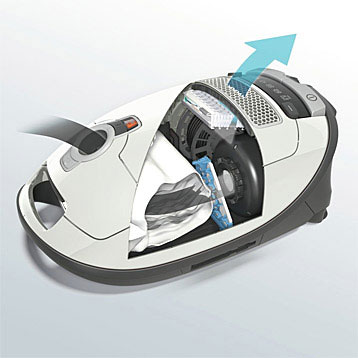
The suction in all vacuum cleaners is produced via a vacuum, which is induced by the engine in the main section and forwarded through a hose or directly to the headpiece. There, the dirt is drawn in and the air escapes out of the device, taking a detour through the motor and cooling it at the same time. This contributes significantly to the fact that vacuum cleaners can be manufactured in such small sizes. Due to the additional cooling the engine is able to achieve a relative excessive amount of work compared to its size without overheating.
The functioning principle may always be the same, but there are different types of vacuum cleaners that serve various purposes. In addition, the models differ greatly in price. Therefore, it should be carefully considered whether a high investment is worthwhile in general and if a low-cost device might be sufficient.
2.1 Cylinder Vacuum Cleaners
Cylinder vacuum cleaners are the most common form and can be found in just about every household. They are particularly absorbent and suitable for use on different surfaces. For this purpose most models are equipped with different attachments like bristles, which can be retracted into the vacuum cleaner nozzle. The vacuum cleaner nozzle is also relatively wide, making it possible to clean very efficiently, since less actions are required. To ensure simple handling most cylinder vacuum cleaners are equipped with wheels so they can easily be moved on most surfaces. That makes them particularly suitable for cleaning almost every house.
2.1.1 Cylinder Vacuum Cleaners With Bags
Cylinder vacuum cleaners are traditionally equipped with a filter bag in which the dirt is collected and once it is full, it needs to be disposed of. Although this does not have to be done very often and the bags are really inexpensive, it still creates an additional burden for the environment. This is also one of the reasons why devices without bags are becoming increasingly popular.
2.1.2 Cylinder Vacuum Cleaners Without Bags
These kind of models have a special collection container installed inside of them, which functions in a similar way to a filter bag. Here again, the dirt particles are filtered out of the air and remain on the outside walls. There are two methods of construction, namely the single and multi-cyclone vacuum cleaner.
In the former method only large dirt particles are retained by the collecting container. Smaller particles arrive at the central filter, which only needs to be emptied from time to time. The central filter has a long durability, which is at least one year.
The operating principle of the multi-cyclone vacuum cleaner is very similar, but in this case the dirt is vacuumed through several stages and continuously filtered. Meanwhile bagless vacuum cleaners are in no way inferior to vacuum cleaners with filter bags. The vacuum flow and filtering is the same as in models with filter bags.
2.1.3 Vacuum Cleaners With Water Filters
One problem with this conventional type of filtering is that some very small particles can escape and get tossed back into the air. These particles can then be absorbed through breathing, which may just result in health-related problems in people suffering from allergies. However, this does not occur if a water filter is used. In fact, the circular flow of these models contains liquid through which the dirt is sucked, binding even the smallest particles in the process. Not only the floor is cleaned, but also the air is freed of residues as well. In addition, no unpleasant odors develop through the use of water filters, as the tank is emptied after each use.
2.2 Handheld Vacuum Cleaners
If there is no power outlet in reach and the surface to be cleaned is only small, then it can be cleaned with a handheld vacuum cleaner. They can be used to clean a lot of things, for example dog hair. Thanks to their small size they can also be used to clean hard to reach areas or bring the car back into shape.
2.3 Robot Vacuum Cleaners
Robot vacuum cleaners are a big step towards Smart Homes. These smart little helpers make our lifes easier by taking the tedious task of vacuuming from our shoulders and even empty sometimes their collection containers automatically. This technology is particularly powerful since these devices need to be very efficient despite having only the size of a plate. However, the differences in quality are largely reflected through the difference in the price. Although relatively simple and cheap robot vacuum cleaners are being offered, they usually tend to have early developing problems like too simple sensors or an inefficient battery. Expensive models, on the other hand, can actually choose the shortest route and even detect thin layers of dirt.
3. Important Features and Purchase Criteria
3.1 Suction Power
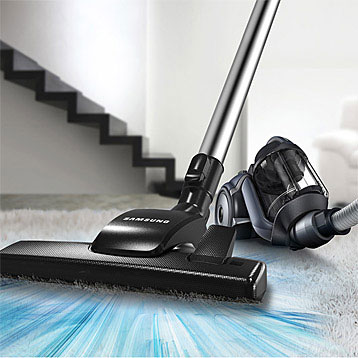
This is the most important criterion for a purchase, which can be determined not only through the performance of the engine. It is in fact very important, how well this performance is transmitted to the vacuum floor nozzle. Nevertheless, the number of watts offers at least one point of reference in terms of suction power. However, it should be noted that due to environmental concerns currently many manufacturers build their engines with little power, but compensate for this disadvantage by offering a particularly efficient suction.
The suction power is even better determined through the unit millimetres water column (mm wc). Unfortunately, only a few manufacturers indicate this, but an online research will often provide the exact values for a model. By comparison, vacuum cleaners start at 2500 mm wc, while on the other side handheld vacuum cleaners only need one-tenth of this value.
In general, the reference on the EU energy label should provide some information about the suction power on hard and carpeted floors. This allows you to compare at least the various vacuum cleaners in one price category with each other.
3.2 Handling
Regular vacuuming is particularly important in the household, which is why easy handling is of special importance. It mainly depends on the wheels, the more of them are present, the better the device can be moved. Their size is of great importance as well. Sometimes only small wheels are installed, which quickly accumulate small hair and lock. Large wheels with rubber coating are a much better choice.
In addition, a wide operating range of the power cord offers increased comfort. As a result, you will rarely have to switch to another wall socket and can therefore work faster.
3.3 Low Weight
Especially the cylinder vacuum cleaners with their relatively heavy engine weigh a lot. The weight will be largely supported by the wheels, but if you want to vacuum on different floors, then you will need to carry the device sometimes. Therefore, it is very important to buy only a very little vacuum cleaner, if you want to ensure a high level of comfort. Fortunately, the weight is nearly always indicated on the product details and an online research can also help you choose the most mobile device.
3.4 Special Floor Nozzle for Pet Hairs
Anyone who has a dog or a cat, knows this problem: Small tufts of hair are lying around everywhere. If these hairs also get caught up in the carpet or on the furniture, then cleaning without tools is often very difficult. There are special nozzles with bristles for this purpose, which have a more aggressive impact on the floor and pick up the hair very efficiently. These are available with many different models and can either be bought or they are already included with some products.
3.5 Dust Filter
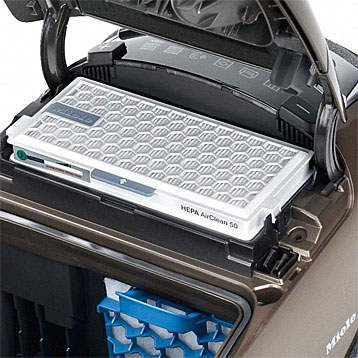
Even devices that don’t have an integrated filter bag usually still have a central filter, which can absorb small particles from the air, so they can’t cause any health problems. The central filter is most commonly located behind the engine and is used in various versions as a micro filter or HEPA filter. The latter is particularly fine and even removes bacteria, mite feces or pollen from the air, which is why especially allergy sufferers should use it. On the other hand, the microfilter is coarse-pored and therefore slightly less efficient.
These filters can be upgraded as well. They are sold as a mat and may be cut for each model.
3.6 Sound Intensity
A maximum noise level of 85 decibels has been prescribed by law for vacuum cleaners. However, the Technical Control Board recommends models that only generate 75 decibels, which is 50% less noise and a reasonable advice. After all, the frequency of use can slowly cause damage to the ear canal. If you prefer a quiet environment, then you should definitely consider devices that only reach around 70 – 75 decibels. However, thanks to modern technology, there are also vacuum cleaners that still fall below this level and only reach 60 decibels.
3.7 Capacity of the Vacuum Cleaner Bag
Make sure that the holding capacity of the vacuum cleaner bag is not too low, so that you don’t have to empty the bag or dust box after every vacuuming. Good values are 3 to 5 litres.
3.8 Power Cord Rewind Mechanism
Most vacuum cleaners have a long cable. The fact that this is obligatory is prescribed by comfort, because only in this way a high radius of application can be reached. Nevertheless, this also means that tangled cables can easily form and the wind-up might become very difficult. However, most models possess an integrated automatic retract function, which automatically retracts the cable via a button or a short pull of the cable.
4. Bagged vs Bagless Vacuum Cleaners
The use of bagless vacuum cleaners is essentially cheaper, since you don’t need to buy new bags on a regular basis. Additionally, the suction power remains consistent and does not gradually decrease as the bag gets fuller. Another advantage of these models is, that the collection bin is mainly located behind transparent plastic, so you always roughly know when it needs to be emptied. In the case of models with filter bags your only option is to open the device and take a look into the bag. You will also quiet likely come into direct contact with the particles while emptying the collection container. They often sit firmly in the membranes and have yet to be emptied, creating a cloud of dust in the process, which is at least partially inhaled.
5. Energy Efficiency Class – The Energy Labels Explained
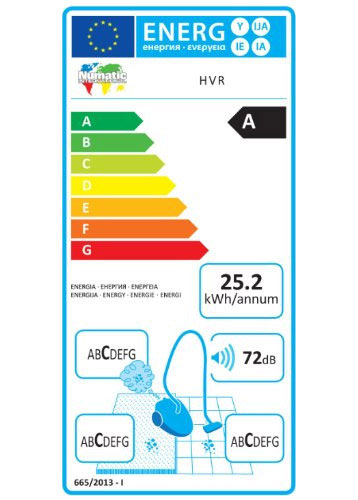
The energy efficiency class is an European standard, which indicates how efficient the power consumption of the device really is. It was introduced in order to increase sales of environmentally friendly devices. The classification into A – G was derived from the American school system, where A represents the best and G the worst value. However, since this evaluation system originated in the 90s and since then technology has further advanced, there are also some new categories like A+, A++ and A+++.
In which category a device is subsumed depends on many criteria, but in the end the type and size of the device will be crucial. Thus, for example, a refrigerator with a lot of storage capacity is allowed to consume more power than a smaller model. To determine the class a reference device is tested, and then indicated how much percentage of this performance was achieved. Besides the manufacturer and the name many other things are indicated on the label, such as the average power consumption per year, the amount of dust released into the air, cleaning classes for hard floor and carpets, and the sound intensity. This information is used to give the consumer a better overview and since 2015 it is also mandatory for new vacuum cleaners. A+, A++ and A+++ do not yet exist for these devices, but in 2017 the categories will be extended with these subdivisions.
The classes for vacuum cleaners are determined by consumption of kWh per year. 36 kWh per year corresponds to the category G and for every step in the direction of the category A another 6 kWh needs to be deducted. The top rating of A is still far away from being reached by all devices. There are still many devices, which are being sold as class B or above.
The following information can be found on the EU energy label:
- The manufacturer and the type description of each model
- Energy efficiency class (A to G) – Each class must first demonstrate standardized power consumption values. Class A has a low power consumption, which is not the case for Class G.
- The average annual energy consumption (indicated via kWh/per year) – For the calculation an 87 m² large living space and 50 suction process of one hour each are estimated.
- Dust emission class (A to G) – The class indicates how much dust is released from the device during vacuuming. Class A vacuum cleaners release less than 0.02% of the absorbed dust back into the air. Models with the classification G release over 1% dust back into the air.
- The noise (in dB) – Indicates the expected sound intensity of the vacuum cleaner during usage.
- Carpet cleaning class (A to G) – During the evaluation a predefined test carpet needs to be cleaned from dust. If the respective vacuum cleaner succeeds in removing 91% of the dust, then he receives an A classification. A vacuum cleaner in class G can only absorb 67% of the dust.
- The hard floor cleaning class (A to G) – When calculating this class a predefined hard floor needs to be cleaned from dust. The same dust absorption values, as in the carpet cleaning class, apply here as well.
It is important to note: As of September 1, 2017 the previous classification is no longer categorized from A to G, but from class A+++ to class D. Models with a worse energy efficiency class rating will be taken off the market from that date.
6. Which Floor Nozzle Is Suitable for What Purpose
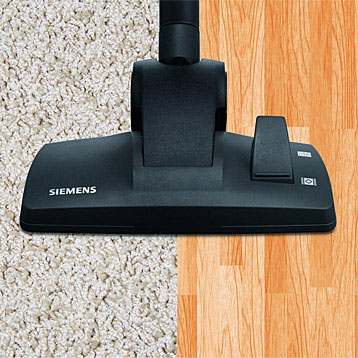
A variety of attachments are available in order to adjust a vacuum cleaner to different surfaces. Some of these are usually included with the device, such as the crevice nozzle or upholstery nozzle. However, special combi nozzles or motorized nozzles have to be purchased in most cases separately. If you have a need for extra nozzles, then you should definitely keep an eye on the optional accessories before buying a vacuum cleaner.
A vacuum cleaner utilizes a universal nozzle during the majority of its usage time, which is also called a combi nozzle. Due to the retractable bristles, this nozzle can be used for both carpets and on a firm surface such as parquet, without leaving scratch marks. If the universal nozzle is used for parquet and carpet, then it might happen that little rough particles get stuck in the bristles. If this is not immediately noticed, then it could already be too late and your expensive floor is ruined. For this purpose special floor nozzles are available which can be attached as needed. They also come with particularly soft brushes to avoid any damage.
The upholstery nozzle on the other hand is, as its name suggests, used on upholstered surfaces. They are used to remove dirt from the sofa or to vacuum crumbs from the bed. You rarely need to purchase them separately, since they are usually included when purchasing a new vacuum cleaner. This also applies to the crevice nozzle, which is suitable for difficult to access areas, such as edges or corners. Thus, it is relatively thin and consists of a tube which is cut obliquely and flat on the front.
The turbo nozzle is exceptionally powerful and has additional brushes that rotate, in order to release deep-seated dirt from carpets and absorb it. These nozzles are driven either by the resulting air suction or by a dedicated engine. However, an extra electrical outlet is needed for the latter, but the cleaning performance is also drastically increased. These brushes are also called power nozzles.
7. House Dust Allergy – This Should Be Taken Into Consideration
Fine dust can trigger a variety of health problems in allergic persons, including a runny nose, cough and even shortness of breath. Therefore physician’s advised to avoid contact with these substances, but this is easier said than done, since we all have to vacuum our houses at some point. In addition, the air inside is more enriched with allergens than outside. However, there are special filters that collect hazardous substances and prevent them from being released back into the air. The HEPA filter is exceptionally effective in doing so and able to achieve this task without even reducing the suction power, which is often the case with very efficient filters. People who are allergic to dust should also consider electric brushes, which are able to safely remove even deep-seated dirt.
In addition, manufacturers sell devices that have been designed specifically for people with allergies and have an effective filter system. These models are available with or without a filter bag.
A small advice: If you have considerable problems with your dust allergy, then it might help to wear a special work mask that prevents the swirling dust from entering the respiratory tracts. In addition, allergy sufferers should only buy devices that have an excellent dust emission class.
8. Important Manufacturers
8.1 Miele
This traditional company was founded in 1899 and with only 11 employees at that time a very small business that produced cream separators. In 1900 butter machines were added to the product range and based on this technology Miele shortly afterwards built the very first washing machine. The company grew quickly and in 1907 already had 60 employees until in the 1950s, this company became one of the largest manufacturers of electrical products in Germany. In 1975 the annual turnover already amounted to 1.65 billion DM. Today Miele is the market leader in the global market for vacuum cleaners generating a turnover of nearly 3 billion euros.
8.2 Vorwerk
The company was founded in 1883 by Carl and Adolf Vorwerk. In addition to high priced vacuum cleaners Vorwerk also sells carpeting and the well-known Thermomix. The company started with the production of furniture upholstery and carpets, expanding its product range with looms shortly after.
Over the course of its long history, Vorwerk sold their products mainly through representatives. However, the company managed to adapt to the spirit of the times and opened online shops and stores in the 21st century. Today Vorwerk has almost 13,000 employees and generates nearly 2.8 billion euros in revenues.
8.3 Siemens
Siemens was founded in 1847 by Georg Halske and Werner Siemens. The company initially produced telegraphs and train undercarriage. However, Siemens expanded its product range quickly and was so successful that not even the crises like the years after the First World War had an impact on the company.
Currently you can buy the electrical devices of this traditional brand in more than 190 countries and the workforce of 348000 employees is growing with each day. The turnover is about 75 billion per year.
8.4 AEG
AEG was established in 1883 in Berlin and produced electronic household appliances in the beginning. Over the decades the company successfully established itself on the market and flourished. However, after its long existence AEG went bankrupt in 1982 and was acquired by the Daimler-Benz AG. This gave the company an enormous upswing and today AEG is operating in positive figures again with a turnover of almost 2.5 billion EUR and over 11,000 employees.
8.5 Dyson
Dyson is a relatively new brand and was established in 1993, which is why a great emphasis is placed on innovations. The biggest Innovations was probably made, when Dysons inventors developed the first bagless vacuum cleaner. Over 28 million vacuum cleaners have been sold since the company’s existence, which has earned Dyson the third place in the vacuum cleaner market in Germany.
8.6 Dirt Devil
Dirt Devil was founded as early as 1905, however, the company did not expand into the German market until the 90s. Nevertheless, Dirt Devil has taken over the market very quickly. This is due to the fact that the vacuum cleaners were designed visually interesting, had excellent cleaning performances and they were cheap as well.
9. Smelly Vacuum Cleaner – What Should I Do?
What exactly has to be done against unpleasant odors depends on the nature of the problem. This might be due to an overfilled bag, since these are filled with microorganisms such as bacteria or mites that excrete substances and thereby produce foul odors. This situation can be solved very quickly by replacing the bag. However, this can also occur in devices without filter bags. This is further favored by potentially absorbed liquid, which is an ideal breeding ground for bacteria. This can be countered with a special deodorant for vacuum cleaners, which is distributed by the suction in the interior. In addition, the collection container should also be cleaned thoroughly on a regular basis. This can be achieved very efficiently with a disinfectant wipe.
It is particularly important to ensure that during vacuuming no liquid ends up in the device. If none of these causes are present, then it might be that dirt got stuck in the pipe and is now rotting inside of it. In most cases this problem can be solved by flushing the pipe with a powerful jet of hot water. In the worst case, a defective motor might be the cause of the bad odor.
10. Stains on the Carpet – How to Remove Stains
- Chocolate or chewing gum can be removed with ice cubes. The corresponding points need to be frozen and then scraped off.
- The same applies to wax, but it does not have to be refrigerated, you only wait until it is stiff. If residues remain, then a little ethyl alcohol will help.
- To remove red wine stains you will have to sprinkle some salt on the area and scrub it with a cloth and detergent.
- Very small burn marks can be treated with sandpaper. However, if the burn mark is too big, then the site can easily be cut out and replaced by a new piece of carpet. This might not be nice to look at, but still better than cigarette burns in the carpet.
11. Frequently Asked Questions (FAQ)
Spiders and Insects – How Long Can They Survive in the Vacuum Cleaner?
There are many myths surrounding this topic, but these have been largely disproved by the manufacturers: According to experts, insects die immediately when sucked in. Because of the high speed of over 100 kilometers per hour they are simply torn apart.
My Dog/Cat Is Afraid of the Vacuum Cleaner – What Should I Do?
Animals do not like loud noises, because their evolutionary instincts usually identify this as dangerous. However, behaviors can be changed. The best way is to get the dog or cat slowly used to the device and connect it with something positive, for example by feeding the animal a treat before each usage.
In Legal Terms: Until What Time Can You Vacuum?
If the process does not take longer than 30 minutes, the vacuum cleaner may be operated at any time. Otherwise, the usual rest periods apply, which are mainly effective on holidays and during the period from 8pm until 7am. However, these vary from one federal state to another.
Vacuum Cleaner Bag – Clean and Reuse, or Rather Not?
There are special bags for this purpose, which are particularly sturdy. Standard products should not be used more than twice. They might otherwise tear and distribute their content in the vacuum cleaner. Besides, there are better things to do than emptying a dust bag.
How Should I Clean the Vacuum Cleaner Filter?
The filter is cleaned with running water and must dry completely, before the fabric is fully receptive again.
More Watts = More Power?
It also depends on the design. Yes, more watts usually means higher input power, but this can also be transferred very poorly to the brush if it is not forwarded efficiently through all parts. This means that for today’s vacuum cleaners the watt input power has become almost redundant. You should rather pay attention to the EU energy label.
Why Does Every Vacuum Cleaner Have Ribbed Hoses?
If the hose was made out of even plastic, it would kink every time it gets moved too strongly, which would also stop the suction.
Is It Worthwhile to Repair a Vacuum Cleaner?
First of all, the cause must be found. If only a few fuses are defective or a connector is loose, then a repair is always worthwhile. A new device is only cheaper, if the engine stops working.
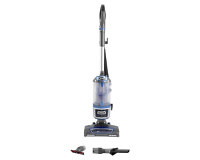
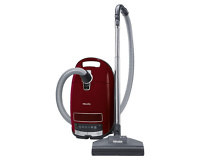
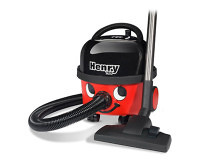
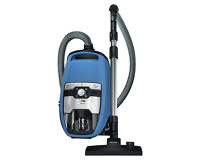
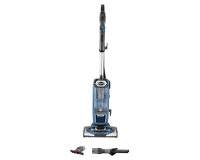
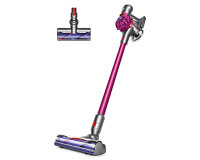
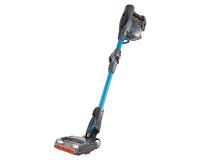
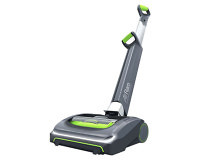
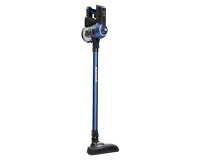
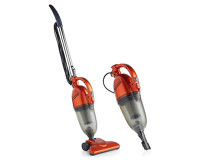
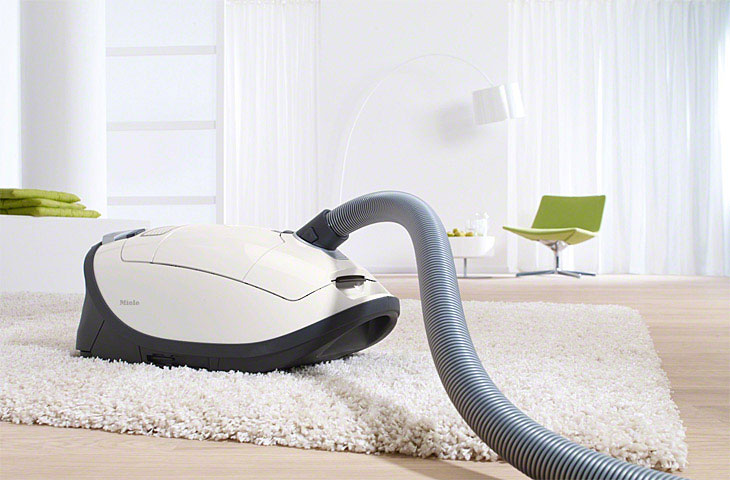

 (19)
(19)